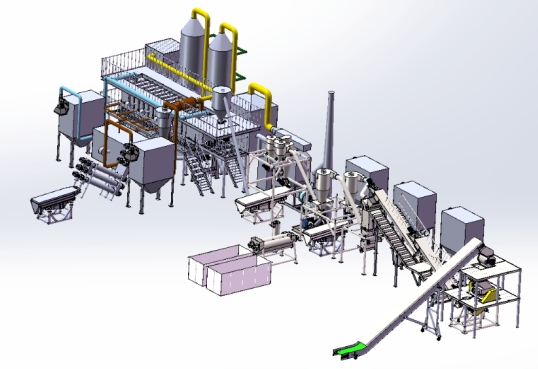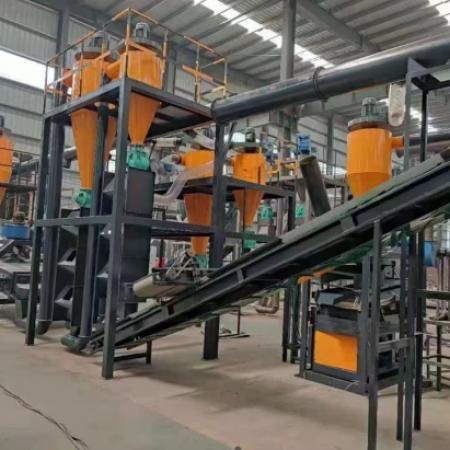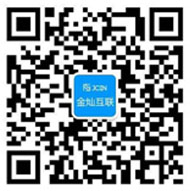Solution for The Scrapped Lithium Battery
Solution for The Scrapped Lithium Battery
Introduction to The Process of Scrapped Lithium Battery Equipment
The scrapped lithium battery is sent to the first-stage shredder by the conveyor for shredding, and the shredded material is sent to the second-stage multi-knife crusher through the conveyor for secondary crushing, and the material after the second crushing enters the conveyor and sets up magnetic separation equipment at the same time, which can separate the iron from the material. The sorted material is sent to the air separator through the conveyor, and the diaphragm paper in the positive and negative electrode foil is separated by the induced draft fan and the cyclone feeder, and the sorted positive and negative electrode foil are entered into the three-stage crusher for fine crushing, and the material is crushed to about 20 um. The crushed material enters the cyclone separator by the negative pressure system for dust filtration, and through two times of air flow separation, the substances of different densities are stratified, and then the positive and negative materials and copper, aluminum, nickel and other materials are obtained, and all the ultra-fine dust is brought into the pulse dust collector by the negative pressure system for collection. The filtered exhaust gas will continue to be sent to the exhaust gas treatment equipment by the negative pressure system for air purification, so that it meets the national emission standards and then carried out high-altitude discharge
Types of Scrapped Lithium Batteries

Process Flow of Scrapped Lithium Battery Treatment Equipment
Cobalt, lithium, copper and plastics in waste lithium batteries are valuable resources with high recycling value. Therefore, the scientific and effective treatment and disposal of waste lithium batteries not only has significant environmental benefits, but also has good economic benefits. Lithium batteries are mainly composed of shell, positive electrode, negative electrode, electrolyte and separator. The cathode is composed of lithium cobalt oxide powder coated on both sides of the aluminum foil current collector through PVDF that plays a binding role. The structure of the negative electrode is similar to that of the positive electrode, consisting of toner powder bonded to both sides of the copper foil current collector. At present, the research on the resource utilization of waste lithium batteries mainly focuses on the recovery of high-value cathode precious metals cobalt and lithium, and the separation and recovery of anode materials are rarely reported. The copper (content of about 35%) of the anode piece of waste lithium battery is an important raw material widely used in production, and the toner powder adhered to it can be used as an additive for plastics, rubber and so on. Therefore, the effective separation of the components of the anode sheet of the waste lithium battery has a promoting effect on the realization of the resource utilization of the waste lithium battery to the limit and the elimination of its corresponding environmental impact. Commonly used methods for recycling waste lithium batteries include hydrometallurgy, pyrometallurgy and mechanical physics. Compared to wet and fire methods, the mechanophysical method does not require the use of chemical reagents and consumes less energy, making it an environmentally friendly and efficient method.
Technical Parameters of Scrapped Lithium Battery Equipment
1). Equipment capacity: 0.2~1 tons/hour
2). Dimensions: 26311 * 6121 * 6350mm
3). Equipment power: ≤129.25KW
4). Power supply: three-phase alternating current 380V/50Hz, 200KVA.
5). Size of waste battery (mm): 600 × 600
6). Iron recovery rate (wt%): ≥ 99%
7). Copper and aluminum recovery rate (weight %): ≥ 98%
8). Recovery rate of cathode and anode materials (weight %): ≥ 99%
9). Noise, dust leakage and exhaust gas emission meet the relevant national standards and requirements.
10). Site requirements: the height of the plant is greater than 7 meters; The width of the door is greater than 4 meters and the height is greater than 5 meters; The bearing weight is more than 10 tons
Configuration of Production Line

Our engineering team can walk you through the design process and help you choose the suitable integrated solution for the scrapped lithium battery that best fits your needs and at a price that will fit your budget. Please contact us for more information and obtain quotation concerning your request.





 jccms
jccms